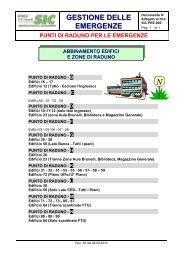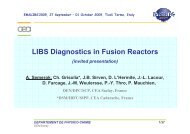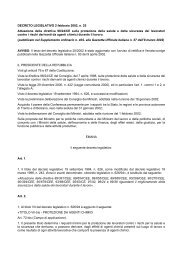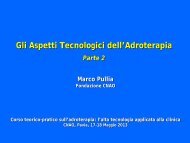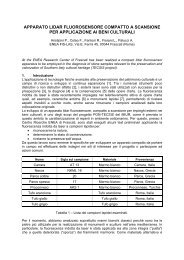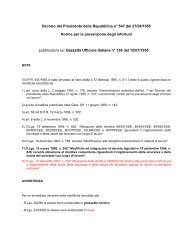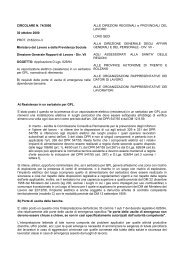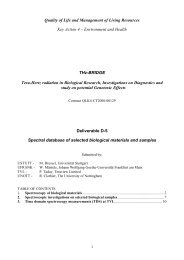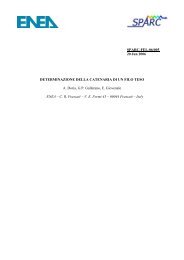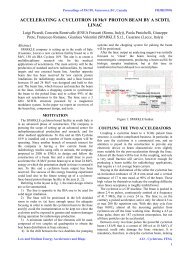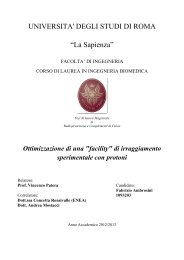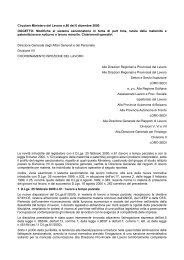Theory, Design and Tests on a Prototype Module of a Compact ...
Theory, Design and Tests on a Prototype Module of a Compact ...
Theory, Design and Tests on a Prototype Module of a Compact ...
Create successful ePaper yourself
Turn your PDF publications into a flip-book with our unique Google optimized e-Paper software.
2. RF MEASUREMENT ON A SINGLE CAVITY 69<br />
design parameters are reachable. This step is repeated for all the tanks<br />
in the same way.<br />
On the other h<str<strong>on</strong>g>and</str<strong>on</strong>g>, the bridge coupler pieces are stacked to make<br />
coupled cells measurement <str<strong>on</strong>g>and</str<strong>on</strong>g> to c<strong>on</strong>trol that the design values are in<br />
the movable tuner range.<br />
Once these steps are finished, the whole module brazing is made,<br />
<str<strong>on</strong>g>and</str<strong>on</strong>g> after, <strong>on</strong>e deals with a structure where it is still possible to move<br />
the rod tuners in the cavities <str<strong>on</strong>g>and</str<strong>on</strong>g> the tuners in the three bridge couplers.<br />
Last, the hard point has to be fixed: after regulati<strong>on</strong>s <strong>on</strong> all those<br />
tuners, <strong>on</strong>e c<strong>on</strong>trol the π/2 mode, by means <strong>of</strong> a frequency measurement,<br />
<str<strong>on</strong>g>and</str<strong>on</strong>g> the axial electric field by means <strong>of</strong> a bead pulling measurement.<br />
The procedure go ahead with the help <strong>of</strong> the empirical criteria<br />
found with the equivalent model <str<strong>on</strong>g>and</str<strong>on</strong>g> with lots <strong>of</strong> patience <str<strong>on</strong>g>and</str<strong>on</strong>g> skill<br />
operators. At the same time, <strong>on</strong>e has to c<strong>on</strong>trol the coupling between<br />
the waveguide <str<strong>on</strong>g>and</str<strong>on</strong>g> the whole module <str<strong>on</strong>g>and</str<strong>on</strong>g> has to choose the length <strong>of</strong><br />
the short-circuited waveguide (see figure 3.11).<br />
Finally, after the parameters are fixed within the design ranges, the<br />
rod tuners are also brazed <str<strong>on</strong>g>and</str<strong>on</strong>g> the module is ready for the power tests.<br />
2. RF Measurement <strong>on</strong> a single cavity<br />
As it is shown in the previous chapters, a res<strong>on</strong>ant mode <strong>of</strong> an electromagnetic<br />
cavity can be fully represented by <strong>on</strong>ly three parameters:<br />
res<strong>on</strong>ant frequency, quality factor <str<strong>on</strong>g>and</str<strong>on</strong>g> shunt impedance.<br />
By using a network analyzer <str<strong>on</strong>g>and</str<strong>on</strong>g> some mechanical <str<strong>on</strong>g>and</str<strong>on</strong>g> electrical<br />
tools, it is possible to measure all these three parameters. In principle,<br />
these measurements are very easy, but a big effort has to be made in<br />
order to get correct results <str<strong>on</strong>g>and</str<strong>on</strong>g> to avoid systematic errors when <strong>on</strong>e<br />
measures the cavities <strong>of</strong> a structure such a LIBO.<br />
2.1. Measurement <strong>of</strong> the res<strong>on</strong>ant frequency. The measurement<br />
<strong>of</strong> res<strong>on</strong>ant frequency <strong>on</strong> a closed cavity (excepted for the beam<br />
holes) is performed using probes which penetrate until the inner surface<br />
<strong>of</strong> the cavity. One probe allows the measurement <strong>of</strong> reflecti<strong>on</strong><br />
coefficient, whereas two probes allow measurement <strong>of</strong> transmissi<strong>on</strong> coefficient.<br />
It is apparent that the cavity should has <strong>on</strong>e or two holes for<br />
the probes, unless the beam holes are used. The probes are realized in<br />
the following two ways:<br />
• electric pick-up which is a rigid coaxial cable, whose internal<br />
c<strong>on</strong>ductor juts out <strong>of</strong> about 4 mm over the external <strong>on</strong>e.<br />
This type <strong>of</strong> antenna should be used where the electric field is<br />
str<strong>on</strong>g 1 . In figure 5.2 an example <strong>of</strong> realizati<strong>on</strong> is shown.<br />
• magnetic loop which is a rigid coaxial cable, whose internal<br />
c<strong>on</strong>ductor juts out over the external <strong>on</strong>e <str<strong>on</strong>g>and</str<strong>on</strong>g> realizes a loop<br />
1 It could be put al<strong>on</strong>g the axis <strong>of</strong> the cavity through the beam hole where the<br />
l<strong>on</strong>gitudinal electric field should be str<strong>on</strong>g.



